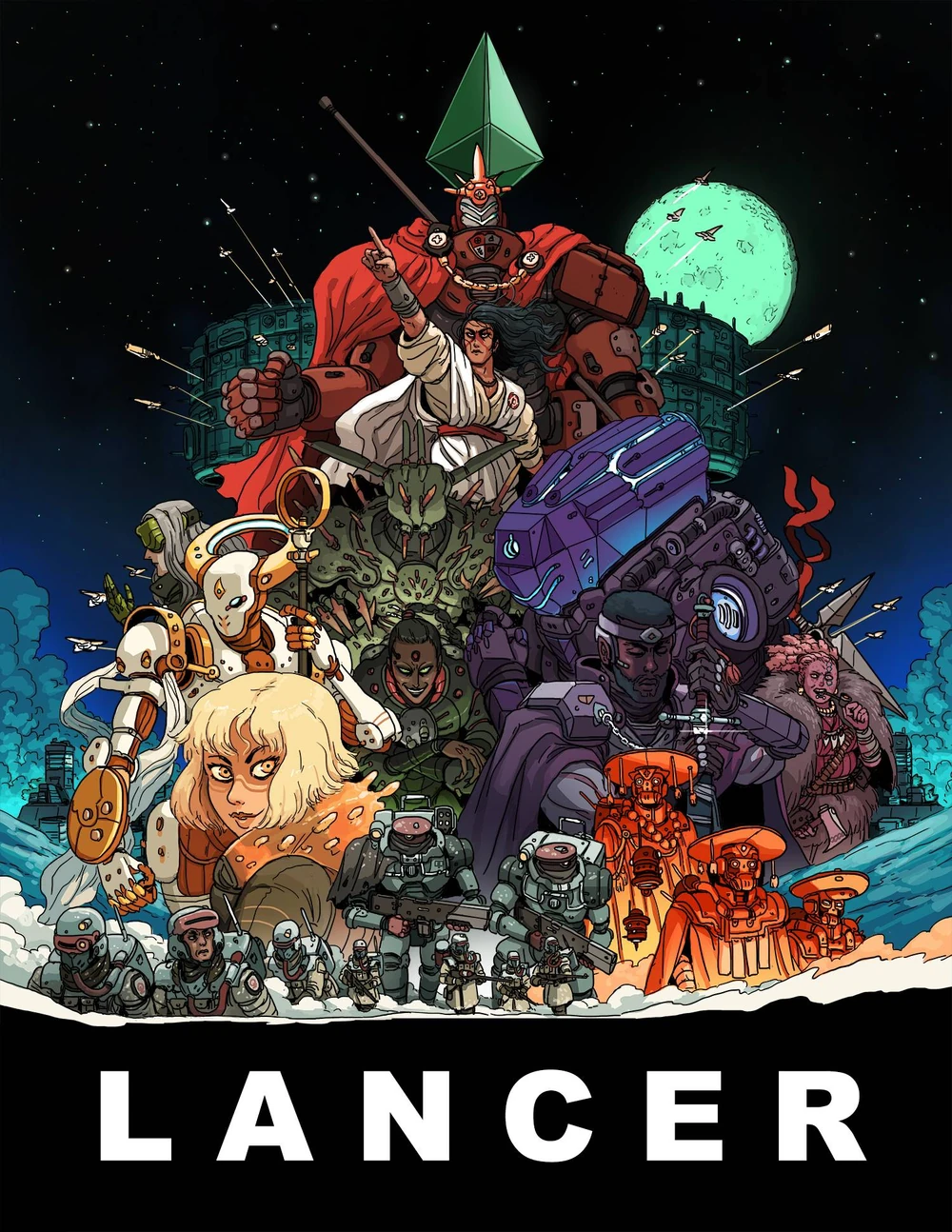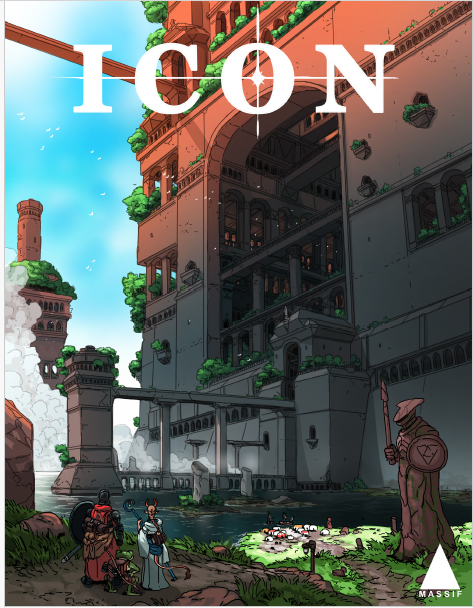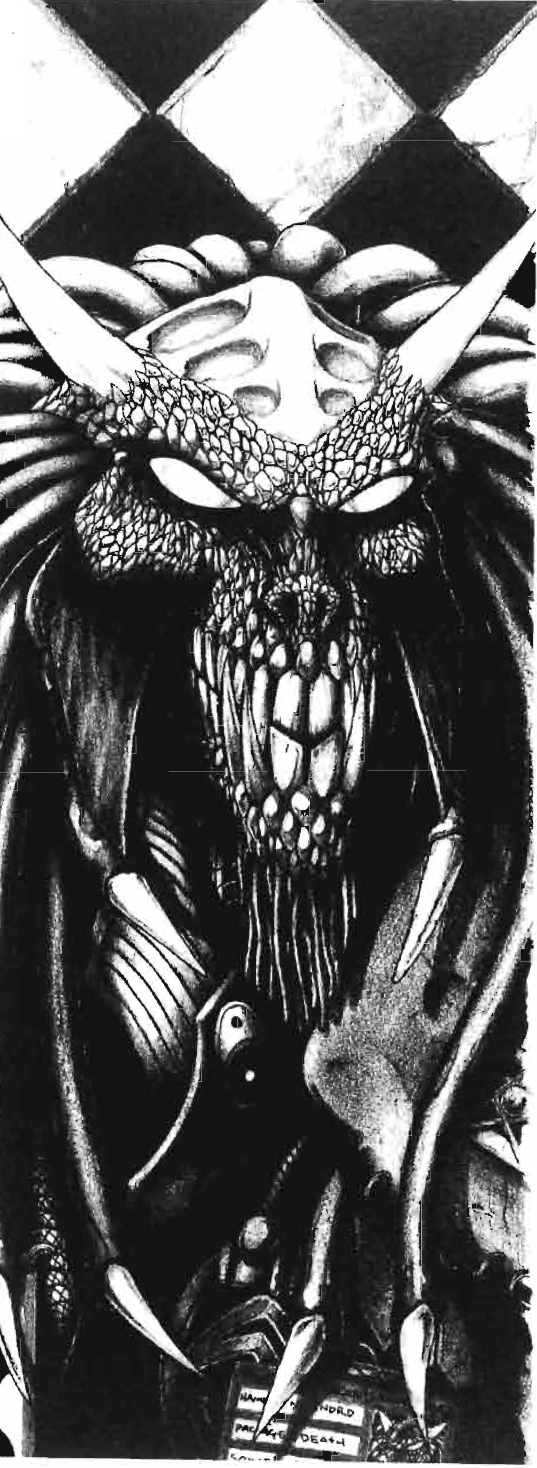And now for the rest of my adaptions.
Weirdly, I only wrote up three actual Star Wars species over the years. Most of these are incidental random ones I did because I thought they would be neat.
Aloxian
Brawn 3 Will 1
WT 11 ST 9
1 Rank in Survival
Starting XP 95
Quick Reflexes: Aloxians are quick to react to danger, both
consciously and reflexively. Aloxians add 1 Advantage to checks they make to
determine Initiative and to react to sudden dangers or unexpected events.
Bone Helmet: All Aloxian start with a vonduun crab skull to
use as a helmet, which they believe helps balance their natural aggression,
treating situations without it as if in a corrosive atmosphere with rating 8
but affecting Strain not Wounds. Losing it triggers the Berserk ability as an
automatic out of turn incidental. For 10 XP, Bone Helmet can be bought off.
Berserk Active (Maneuver) Once per encounter, your character
may use this talent.
Until the end of the encounter or until they are
incapacitated, your character adds 1 Success 2 Advantage to all melee combat
checks they make. However, opponents add 1 Success to all combat checks
targeting your character. While berserk, your character cannot make ranged
combat checks. At the end of the encounter (or when they are incapacitated),
your character suffers 6 strain.
Helmet was costed as Air Supply and Berserk for 10-10XP,
-5 XP for high Brawn + WT
Kind of a weird one I've never been super happy with. The concept sounds cool but in practise it's a complicated.
Nephran
Brawn 3 Agility 1
WT 10 ST 10
1 Rank in Resilience
Starting XP: 100
Amphibious: Nephran can breathe underwater without penalty (or can hold its breath so long
as to have the same result) and never suffers movement penalties for traveling through
water.
Pincers: add
1 Setback to checks they make requiring fine manipulation, and unarmed attacks
gain the Vicious 1 item quality.
I’m
worried I’m giving too many species Resilience as their starting skill.
Variantion or Subspecies: Decapodian
Replace
Brawn 3 with Brawn 2
Replace 1
Rank in Resilience with 1 Rank in Charm
Redundant
Organs: Decapodians have many redundant organs that allow for them to live
despite massive trauma. If a Decapoian suffers a Fearsome Wound or Agonizing
Wound as the result of a critical hit, that result is ignored.
Yes, it
is Zoidberg. I managed to work in the jokes about his ever changing anatomy by
taking the Redundant Organs trait twice but also tried to work in the
nebbishness and mating competitions.
Klingon
3 Brawn 1 Cunning
WT 11 ST 9
1 Rank in Resilience or Deception
Starting XP 95
Redundant Body Systems: Decrease the difficulty to heal any Critical Injuries a Klingon is suffering from by one (Hard becomes Average, Average becomes Easy, and so on)
Basically a rework of the Krogan. If you want to have both, just say the Klingon tendency to have radically different makeup is a symptom of the Krogan injecting themselves with mamalian genes to stave off the Genophage. A 5 XP penalty was applied for having a combination of high Brawn and WT.
Slig
Intellect 1 Cunning 3
WT 12 ST 10
1 Rank in Coercion
Starting XP 110
Amphibious: Sligs can breathe underwater without penalty (or can hold its breath so long as to have the same result) and never suffers movement penalties for traveling through water.
Poor Vision: Take 1 Setback die when performing vision-based perception checks
Slig Pants: Slig start the game with a pair of mechanical legs, without these
legs a Slig can only perform 1 manoeuvre per round.
The Oddworld guys, the Dug would serve as the Glukkon. They have a lot of XP for being a bunch of grunts. If they were built on a 120 point scale they would have a Starting XP of 100. And if built on a human/Genesys 110 XP, they would have a starting XP of 90.
Saiyan
Brawn 3 Cunning 1
WT 12 ST 10
1 Rank in Perception or Coordination
Starting XP 95
Fight-Minded: Saiyans add 1 Setback die to all Charm checks
they make. Other characters add 1 setback to all social skill checks they make
targeting Saiyans.
Fast Metabolism: Saiyans recover twice as fast from the
effects of poisons and toxins as humans. They also require a huge amount of
sustenance (food, fuel, etc.) each day; if they are unable to meet this
requirement, they become disoriented until they can satiate themselves. When
attempting to recover from Critical Injuries they add a Boost to Resilience
checks they make.
The Beast Within: Saiyans generally look humanoid. However,
when your character is incapacitated due to exceeding their strain threshold
while in human form, they undergo the following change as an out-of-turn
incidental. They heal all strain; increase their Brawn and Agility by one, to a
maximum of 5; and reduce their Intellect and Willpower by one to a minimum of
1. They deal +1 damage when making unarmed attacks, and their unarmed attacks
have a Crit rating of 3. In addition, their jaws elongate into muzzles, their
hair thickens and they grow more all over their bodies, and their eyes become
those of a red primate. Your GM should ensure that NPCs react appropriately to
this (at the very least, upgrading the difficulty of all social skill checks
twice). Your character reverts to human form after eight hours, or if they are
incapacitated (by exceeding either their wound threshold or their strain
threshold).
Savage Control: Once per session, your character may make a
Hard Discipline check as an out-of-turn incidental. If they succeed, they may
either trigger The Beast Within or avoid triggering it when they exceed their
strain threshold.
Weak Spot: Saiyans have very sensitive tails. If the tail is damaged, usually when an opponent aims for it in combat, the damage is not reduced by the character’s soak.
Well this was a challenge. I only tried because someone reminded me that the Ki blasts and flying was “normal” for Dragon Ball so even humans could do that. That just mean stripping down the Saiyans to their key traits.
While way too much for Star Wars and probally evem Genesys, I copied the Shifters from the Genesys Expanded Player's Guide. The tails being a weak spot actually meshed with Genesys rules and the
15 XP negates the Shifter (5 XP) + Improved Shifter (10 XP) Talents with an
additional XP penalty for high Brawn + WT. The Resilience rider on Fast
Metabolism seemed to fit Zenkai.
I was very tempted to rework Savage Control and the Beast Within for
Tarkata
Brawn 3 Presence 1
WT 11 ST 10
1 Rank in Perception or Discipline
Starting XP 90
Blades and Teeth: Tarkata have sharp teeth and blades on
their forearms. Tarkata may spend 4 Advantage
from a combat check they make targeting an engaged enemy to deal an additional
hit to the target; the hit has a base damage of Brawn +2 and a Critical rating
of 3. (This hit inflicts +1 damage for each Success,
as usual.)
-5 XP for High Brawn and WT, their arm blades pre-empt their teeth with damage so they are rolled into the same ability.
(Meelina by Justin Murray, Mortal Combat X concept art.If Meelina/Half-Tarkata aren't supposed to be pure freaks, then having some kind of lips makes sense, even if no design really makes it work)
Half-Tarkata
All 2
WT 10 ST 10
1 Rank of any skill up to a maximum of two ranks at
character creation
Starting XP 105
Inherited Jaws: Half-Tarkata retain the inhumanly wide
mouths and sharp teeth of the Tarkata. When a Half-Tarkata makes an unarmed
combat check, the attack increases its base damage by +1 and has a Critical
rating of 3.
Just a Human with 5XP deducted for being able to bite
people during Brawl attacks.
Uz
Brawn 3 Willpower 1
WT 12 ST 10
1 rank in Stealth or Survival
Starting XP 100
Fast Metabolism: Members of the species recover twice as
fast from the effects of poisons and toxins as humans. They also require a huge
amount of sustenance (food, fuel, etc.) each day; if they are unable to meet
this requirement, they become disoriented until they can satiate themselves.
When attempting to recover from Critical Injuries they add 1 Boost die to
Resilience checks they make.
Shadow Dweller: When making skill checks, Uz remove up to
two setback dice imposed due to darkness. Uz add 1 setback die to all checks
they make while in bright natural light, such as direct sunlight.
Not quite as Gloranthan or as Star Wars like as I wanted
them to be, but the gist was gotten across. XP penalty for high Brawn and WT
but XP bonus for low Willpower + ST.
Inkling
Brawn 2, Agility 3, Intellect 1, Cunning 2, Willpower 2, Presence 2
Starting Wound Threshold: 10 + Brawn
Starting Strain Threshold: 10 + Willpower
Starting Experience: 90
Starting Skills: An Inkling starts with one rank in either Athletics or Charm
during character creation. They obtain this rank before spending experience
points, and may not increase Athletics or Charm above rank 2 during character
creation.
Amphibious: An Inkling can freely shift between their humanoid form and their
cephalopod form on an instinctual level. This species can breathe underwater
without penalty and never suffers movement penalties for traveling through
water or other non-toxic liquids, particularly their own ink. An Inkling may
need to make an Athletics check to scale sheer surfaces or jump gaps, at the
GM’s discretion.
Ink Jet: Ink Jet: An Inkling can spray a highly-pigmented ink from its pores, which they can use to mark territory and more easily traverse ground. As a Manoeuvre, an Inkling can coat a surface area up to a maximum of Short range to use the Amphibious Trait or as an Action, an Inkling may also use Ink Jet as an attack with the following weapon profile: (Ranged, Damage -, Critical 2, Range [Short]; triggering a critical temporarily applies the Blinded critical injury, lasting until the start of the Inkling's next turn)
Spline Shooter: This liquid-spraying weapon is used
by Inklings to extend their ink spray.
Ranged, Damage -, Critical 2, Range [Medium]; triggering a critical temporarily applies the Blinded critical injury, lasting until the start of the Inkling's next turn. An Inkling can target a surface area up to a maximum of Medium Range for the purpose of coating it in ink.
Subspecies:
Octoling
Replace Intellect 1 Willpower 2 with Intellect 2, Willpower 1
Replace Starting Skills with 1 Free rank in either Mechanics or Athletics
Saw someone make an Inkling/Octoling write up for Genesys and I redid for Edge of the Empire 130 XP total. Ink Jet is a combination of Climber (valued at 5xp) and the potential for a temporary Critical. Probally could of reworked Ink Spray from the offical Quarren species. Weirdly, they might have rabbits in the earliest concept. Making them weird Lepi (Rabbit-People) found in the Unofficial Species Menagerie. For a sort of swamp rabbit, use that theme and make all the 70s references you want)
Paizlin – V1
Agility 3 Presence 1
WT 8 + Brawn ST 10 + Willpower
1 Rank in Survival or Stealth
Starting XP: 105
Size Matters Not: Pazlins have a Silhouette of 0 and their encumbrance
value is halved
Dark Vision: When making skill checks, Pazlins remove up to
two Setback dice imposed due to darkness.
Fast Metabolism: Members of the species recover twice as
fast from the effects of poisons and toxins as humans. They also require a huge
amount of sustenance (food, fuel, etc.) each day; if they are unable to meet
this requirement, they become disoriented until they can satiate themselves.
When attempting to recover from Critical Injuries they add 1 Boost die to Resilience checks they make.
Vicious Little Monsters: Pazlins add a Boost Die to all
combat checks that target characters who have a larger silhouette than they do.
Paizlin – V2
Brawn 1 Agility 3 Presence 1
WT 8 + Brawn ST 10 + Willpower
1 Rank in Survival or Coercion
Starting XP: 90
Size Matters Not: Pazlins have a Silhouette of 0 and their encumbrance value is halved
Dark Vision: When making skill checks, Pazlins remove up to two Setback dice imposed due to darkness.
Fast Metabolism: Members of the species recover twice as fast from the effects of poisons and toxins as humans. They also require a huge amount of sustenance (food, fuel, etc.) each day; if they are unable to meet this requirement, they become disoriented until they can satiate themselves. When attempting to recover from Critical Injuries they add 1 Boost die to Resilience checks they make.
Nimble: Paizlins have a melee and ranged defense of 1.
XP unchanged due to Silhouette but +5 to compensate for combination of low Brawl and WT. Way too many powers to be used in a Star Wars game.







































